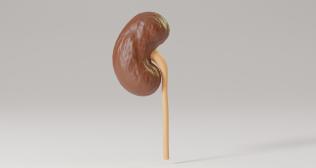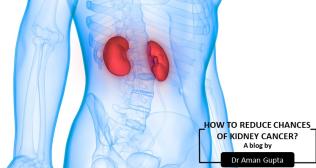
Extracorporeal Shockwave Lithotripsy (ESWL): Procedure, Symptoms, and Insights
Kidney stones can be an intensely painful and disruptive condition, often appearing without warning and causing severe discomfort. For decades, treating them required invasive surgery. However, medical technology has evolved dramatically, offering powerful and minimally invasive solutions. One of the most significant breakthroughs in this field is Extracorporeal Shockwave Lithotripsy (ESWL), a procedure that has revolutionized the way we treat kidney stones.
For patients diagnosed with kidney stones, understanding the treatment options is key to making informed decisions. This guide provides a detailed look into the ESWL procedure, explaining how it works, what to expect during and after treatment, and why it has become a cornerstone of modern urology.
What Is ESWL?
To understand what is ESWL, it helps to break down the name. "Extracorporeal" means "outside the body," which is the key to this procedure's non-invasive nature. ESWL uses high-energy sound waves, or shockwaves, generated by a machine outside the body to break down kidney stones into tiny, sand-like particles.
These smaller fragments are then able to pass naturally out of the body through the urine over the following days and weeks. It is a highly effective ESWL kidney stone treatment that avoids the need for surgical incisions, making recovery much faster and more comfortable for the patient.
The ESWL Procedure Explained
The ESWL procedure is a carefully orchestrated process designed for precision and patient comfort. While it may sound complex, the experience for the patient is straightforward.
Preparation
Before the procedure, you will be asked to change into a hospital gown. An intravenous (IV) line may be placed in your arm to administer fluids and medications. To ensure you remain comfortable and still, you will likely be given a sedative or light anesthesia. This helps you relax and minimizes any discomfort from the shockwaves.
Positioning and Targeting
You will be positioned on a treatment table, lying on a soft, water-filled cushion. The urologist then uses advanced imaging, either X-rays or ultrasound, to precisely locate the kidney stone. This real-time imaging is crucial, as it allows the technician to focus the shockwaves directly onto the stone with pinpoint accuracy, avoiding damage to surrounding tissues.
Delivering the Shockwaves
Once the stone is targeted, the lithotripter machine is activated. Over the next 45 to 60 minutes, it delivers a series of several thousand focused shockwaves through the body to the stone. Patients may hear a repetitive clicking or popping sound and feel a tapping sensation on their skin as the shockwaves are delivered.
The energy of these waves is just enough to shatter the brittle stones without harming soft tissues like skin and muscle. The entire ESWL procedure is monitored continuously to ensure the stone is breaking up effectively.
Who Is a Good Candidate for ESWL?
While ESWL is a powerful tool, it is not suitable for everyone. A specialist in ESWL urology will consider several factors to determine if this is the right treatment for you.
Ideal candidates typically have:
- Stones of a certain size: ESWL works best on stones that are generally less than 2 centimeters in diameter.
- Stones in a favorable location: Stones located in the kidney or upper ureter are more easily targeted.
- Stones of a specific composition: Softer stones, like uric acid stones, tend to break apart more easily than harder stones, such as those made of calcium oxalate monohydrate.
ESWL may not be recommended for pregnant women, individuals with bleeding disorders, severe skeletal deformities, or those with active urinary tract infections.
Symptoms and Recovery After the Procedure
Recovery after the ESWL procedure is typically quick, and most patients can go home the same day. However, it's normal to experience some specific symptoms as your body expels the stone fragments.
Common post-procedure experiences include:
- Blood in the Urine (Hematuria): It is very common to see pink or red-tinged urine for a few days after treatment. This is normal and indicates that the process is working.
- Flank Discomfort: Some patients experience a dull ache or bruising in their back or side where the shockwaves were applied.
- Passing Stone Fragments: You will pass the tiny stone particles in your urine over several days or weeks. This can sometimes cause mild discomfort or a cramping sensation.
Your doctor will advise you to drink plenty of water to help flush the fragments out of your system. You may also be given a strainer to collect the particles for laboratory analysis, which can help prevent future stones from forming. Most people can return to their normal daily activities within one to two days.
The Benefits of ESWL Kidney Stone Treatment
The ESWL procedure remains a popular choice for both patients and doctors for several compelling reasons.
- Completely Non-Invasive: No cuts or incisions are made, which significantly reduces the risk of infection and complications associated with surgery.
- High Success Rate: For suitable candidates, ESWL has a high success rate in breaking up stones effectively.
- Quick Recovery: The recovery time is much shorter compared to surgical procedures, allowing patients to get back to their lives faster.
- Outpatient Procedure: It is typically performed on an outpatient basis, meaning no lengthy hospital stay is required.
As a leading ESWL kidney stone treatment, it represents a significant advancement in patient care within the field of ESWL urology.
A Modern Solution for a Painful Problem
Living with the threat of kidney stone pain can be daunting, but modern medicine offers effective and minimally disruptive solutions. The ESWL procedure stands out as a testament to medical innovation, providing a safe and reliable way to treat kidney stones without surgery.
If you are dealing with kidney stones, discussing this option with your urologist can be the first step toward a quick and comfortable resolution, allowing you to move past the pain and get back to your life.
Frequently Asked Questions
1. Is the ESWL procedure painful?
Patients are given sedatives or light anesthesia, so there is minimal discomfort during the procedure. You may feel a light tapping sensation on your skin.
2. How long does it take to pass all the stone fragments?
It can take anywhere from a few days to several weeks to pass all the fragments. Drinking plenty of water helps speed up this process.
3. Are there any major risks associated with ESWL?
ESWL is very safe, but risks can include incomplete stone fragmentation, blockage of the urinary tract by fragments, or infection. These are relatively uncommon.
4. Will I need more than one ESWL treatment?
Sometimes, a second treatment may be necessary if the stone is large or does not break up completely after the first session.
5. How soon can I go back to work after the procedure?
Most people can return to work and normal activities within one to two days, though you may be advised to avoid strenuous activity for about a week.



















